What is Dark Tourism? And What Are the Pros and Cons?
While visiting places of death or disaster might sound like a gruesome addition to your travel itinerary, so-called dark tourism can have important benefits for you and the communities nearby.
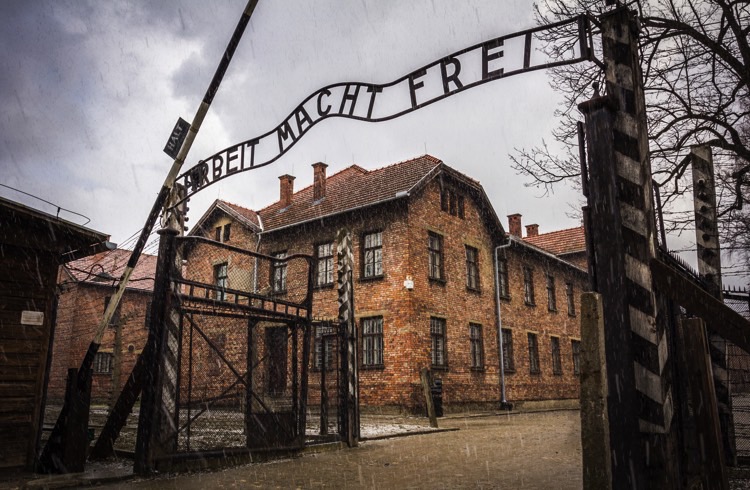 Photo © Getty Images/SPC#JAYJAY
Photo © Getty Images/SPC#JAYJAY
Visiting sites of inhumanity can be a deeply moving and emotional experience, but while discovering what took place might make us uneasy, remembering what happened and why is essential.
- What Is Dark Tourism
- Is dark tourism ethical?
- Why is dark tourism popular?
- Why is dark tourism controversial?
- What to Ask Yourself Before You Go
- How to Behave
What is dark tourism?
When you visit a site such as Cape Town’s Robben Island, the Killing Fields of Cambodia, Hỏa Lò Prison in Hanoi, or Anne Frank’s house in Amsterdam, you are engaging in dark tourism. And you’re not alone.
According to the blog The Common Wanderer, more than 23 million people have paid their respects at the 9/11 Memorial since it opened in 2011. In 2015, the Auschwitz Birkenau Concentration Camp accepted 1.53 million visitors, and Cambodia’s Killing Fields (Choeung Ek) drew more than 210,000 in 2014.
And, this is not necessarily a new travel trend; Mark Twain wrote a chapter about Pompeii in his book Innocents Abroad, and within days of the end of the major US civil war battle of Gettysburg, the residents of the town had created a tourism industry around the still-smoking fields, which included tours and entertainment.

Is dark tourism ethical?
The key to any visit to a dark tourism destination is intent – why do you want to visit? Hopefully, because of a desire to pay respects to the dead and to learn from what happened there. By avoiding these signposts of past wrongs, we can hopefully prevent them from being repeated.
“We should be visiting these sites,” says travel writer Kendall Hill. “To remind us of the events that led up to, for example, the Holocaust, and how to prevent that from happening again. We can't be responsible custodians of the future without understanding our past. And one could argue, with the world now hostage to several despots, it's more important than ever to be armed with that knowledge and be vigilant. Those who ignore history are doomed to repeat it.”
Why is dark tourism popular?
“I think tourism is one of the strongest forces to help devastated communities earn income and get back on their feet,” says Hill. “Whether war zones or former pariah states that are now tourism hotspots.”
Many countries have benefitted from tourism after trauma including Rwanda, Mozambique, and Cambodia. When visiting Croatia, it’s hard to believe a civil war took place there just 20 years ago, so successful is its tourism industry.
There are benefits for travelers, too. Visiting the sites of atrocities gives us more of an understanding than reading about it in a book ever could.
“What I remember most about the time I spent in Warsaw's WWII-era Jewish ghetto,” says National Geographic writer Robert Reid, “is a fellow visitor, a white-haired man who, when I noticed the number tattooed on his arm, acknowledged my silent inquiry with a nod. The experience made history more real for me.”
For travel editor, Sarah-Kate Lynch, one of the positives of dark tourism is being able to make a connection to the past, in particular during a visit to the Sachsenhausen concentration camp near Berlin. “Instagram wasn’t invented when I went,” she explains, “but this memorial is not a place to smile and take selfies. I found it moving and sad, and it made the horrific history of what happened, exactly where I was standing, mean something more to me. Understanding humanity, good or bad, is what travel is all about.”
Why is dark tourism controversial?
Despite the positives, there can be negative aspects of dark tourism, too. Avoid tourism sites being run purely for profit rather than to educate, or tour operators and museums that are insensitively sharing the view of both the victims and the perpetrators. If going on a guided tour, research ethical or non-profit tour companies, or those that give something back to the communities or the place you are visiting. Make sure the site is respectful to the people who lost their lives, and that visitors are encouraged to behave appropriately.
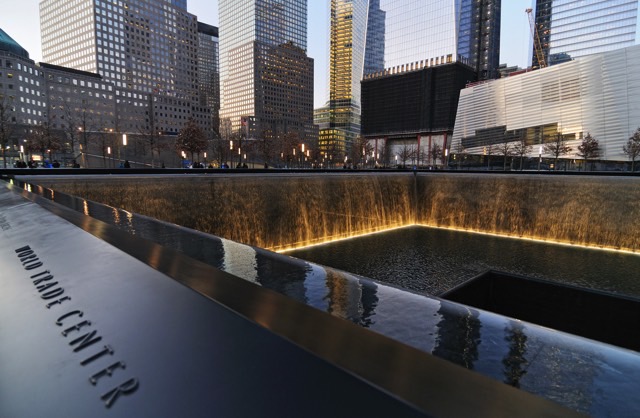
What to ask yourself before you go
Ask yourself why you want to visit a particular site; are you traveling to a place to heighten your understanding, or simply to show off or indulge some morbid curiosity?
Do you want to gawp, or remember and build your understanding of what took place and why? What is your intent?
Dark tourism isn’t for everyone, so make sure you are comfortable with where you are going.
“If you’re worried about being upset or challenged by visiting something you’re not sure of,” says Lynch, “you might be better to stay away. But, if you’re curious enough to stretch the boundaries, research is key – when to go, who to go with, and how to behave when you get there are all things you should find out.”
How to behave
Online photos on social media of a group of men on a stag weekend in New York holding an inflatable sex doll at the 9/11 Memorial sparked outrage, as have other images of people giving a thumbs-up with the gates of Auschwitz in the background.
Be mindful of what events took place at the site you are visiting – in many cases, you are effectively visiting a site of mass graves and murder.
Think about how that makes you feel, and respond accordingly.
Talk quietly or not at all.
Ask staff if it’s ok to take photos, and only do so if it’s appropriate, and don’t use big flashes or noisy recording equipment. Only photograph people if you have asked permission first.
Related articles
Simple and flexible travel insurance
You can buy at home or while traveling, and claim online from anywhere in the world. With 150+ adventure activities covered and 24/7 emergency assistance.
Get a quote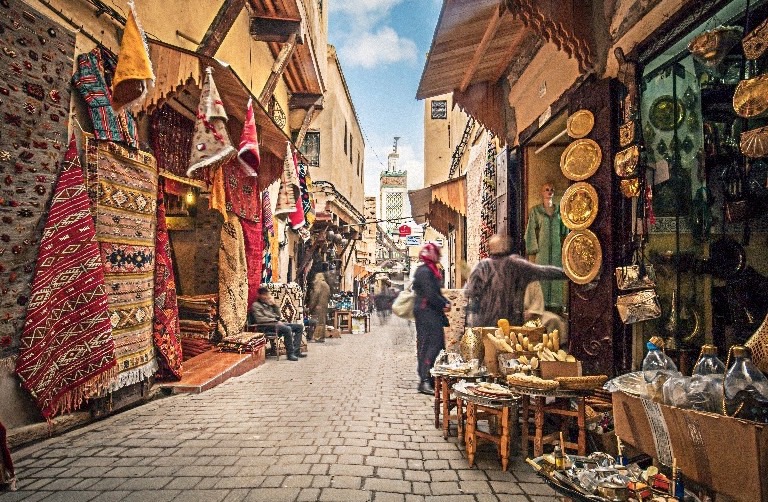
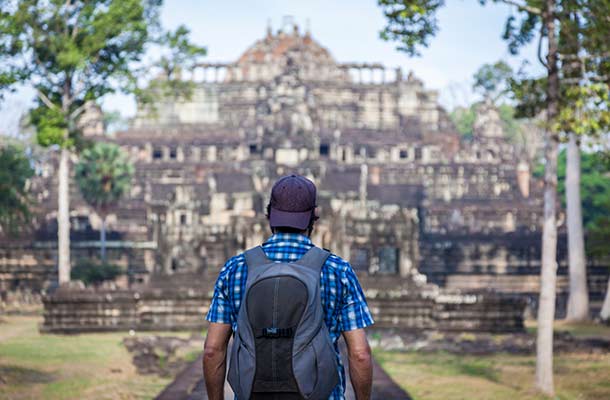
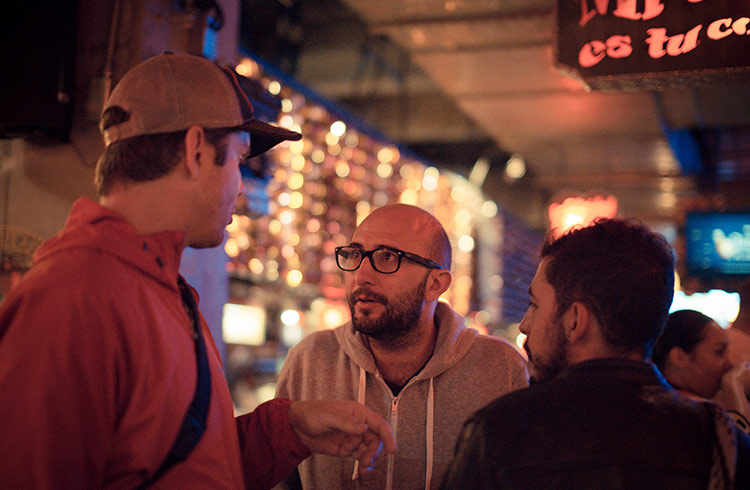
19 Comments
I have been to the killing fields in Cambodia and our tour group didn’t talk for the tour or about an hour afterwards. The place made me cold in my bones like the evil was still there. I lit incense and said a prayer for those lost but was disgusted by Chinese tourists taking smiling selfies in front of the mounds of skulls. Complete disrespect for the people lost there, those who are still alive but lost family members and all the people in Cambodia who fear the return of the Khmer Rouge.
Dear Amy, it's so wrong to put labels! I'm sure every country will have at least one idiot who's going to make a selfie instead of paying respects. I don't know where you're from, but I'm sure not everyone from your country goes there to lit incense and pray ...
Amy,
I too have witnessed the same thing when I visited the Killing Fields. In fact, it has happened on a few occasions where I have visited places considered as 'dark tourism', where all I wanted to do was to feel the environment in silence but couldn't because of loud chatter from large groups of Chinese tourists.
The name of the game is to be mindful and respectful when visiting places of attrocities.
And oh, Balu. FYI. I'm an Australian born Chinese if you're wondering what my background is.
When you tour around the world, and you transgress, others will note your country of where you are from, and of course brand that country.
Unfortunately in many countries especially Thailand the Chinese culture is noted as having little social etiquette, and the Chinese tour guides should educate their flock.
I agree about others comments about the Chinese in Cambodia. My group ran across the most obnoxious tour group from Shanghai who trashed the waiting area at the airport, they were rude to people sitting and waiting for their flight and were very loud. Groups like that need to be reigned in by the tour guide. As for Dark Tourism, I always try to visit places in countries where I can learn and pay my respects. When I visited Croatia, I wanted to spend some time in Sarajevo. My two travel partners said I was on my own and neglected to go because it was “too depressing”. Dark tourism is not for everyone, for certain. But we need to be reminded of things that are sad parts of history and hopefully will never be repeated.
What a click-bait title! Of course we should visit these sites. It's called history. People have been doing it forever, and we will continue to do so. Dark tourism is just a label for these kinds of sites, and many of these sites hate that label, because of the type of people it attracts (I currently research issues surrounding dark tourism). In the past people who visited Auschwitz or the Killing Fields or any other similar place did so out of their own personal interest, but now a lot of people who go there seem to want to do so for the Instagram and/or shock factor.
The real problem is people who visit who have no respect for what they are seeing. It not only ruins the experience of others who are genuinely interested in the site, but encourages more people (who see pictures from family/friends/SNS) who may also act inappropriately, to visit these places.
I have visited Auschwitz well over a dozen times,usually with Polish and American students. It has always been a very powerful experience. However, I can not count the number of times that an American has told me about their visit to Kraków. Poland has a history that spans over one thousand years yet these individuals only stay overnight, visit the German concentration camp and travel on to Prague! Stop and ask yourself how these six years of brutial occupation affected the Polish nation and its people.
Having just visited both Auschwitz-Birkenau and the 9/11 Memorial Museum and Memorial in the past few weeks, I have been pretty disgusted with whole taking selfies. I just don't get it. Seeing someone make a duck face in front of a replica train carriage where people were carried to their death makes me feel sick! Even posing in front of things is a little tasteless. I have gone to pay by respects and to educate myself further. We took our 18 year old daughter to Auschwitz because we want her to see, feel, touch and smell history, not just read about it or see stuff on YouTube. It is so much more powerful and we can help to educate the generation behind us so that these atrocities are never forgotten and hopefully never repeated.
Interesting timing to read this article. Just yesterday we were in Vukovar, Croatia and vicinity. Touring the museum there is a small section displaying articles from the civil war. They invite photos and are a moving tribute to the dark side of the troubles they endured. Unfortunately, the people are going through other problems now with an enduring history of corruption, but at the moment are at least not shooting at their brothers and sisters. Today we are in Belgrade and may hear the other side.
This article reminded me of the places I have visited which I never thought of in terms of "dark tourism" but find this description appropriate. I happened to go to the Terezin Concentration Camp in Prague on a cold, snowy January day all by myself and clearly remember feeling nauseous when the bus neared Terezin. It was a foggy day and there was the kind of eerie silence that speaks volumes of secret pain and the darkness humanity is capable of. I saw a man with a rifle and a dog and imagined how that rifle must have appeared to all those who lost their lives in the concentration camp. What made me deeply sad was the museum of performing arts where music teachers and children put on plays to entertain the Nazis. The children made art and everything appeared "normal" on the surface. In Pompeii I also ended up going alone because my friend didn't want to come. The feeling was definitely dark and eerie. I suppose I could feel this more because there weren't that many people the day I went. At the 9/11 Memorial there were lots of people and traffic but I used to live in New York and remembered going into the WTC and that alone made the whole thing hard to believe. NY definitely did not feel like the fearless NY I once knew. These tragic events have definitely humbled the world. I'll be visiting the Pearl Harbor Memorial this fall and will keep this article in mind.
This is a well-written piece. Dark tourism is beneficial for cultural and historical understanding. A couple of points that stood out to me were in your cautions. First, advising someone to stay away because it will be worrisome or challenging is counterproductive. This is what these experiences are meant to be, contemplative, and those visitors will be respectful and attentive. Second, you advised visitors to stay away from places that insensitively share the view of the victims and the perpetrators. If you're referring to hate groups, I agree, however sometimes seeing how information is presented, and being able to critically assess that information, helps gain a valuable understanding of propaganda and how perspective is learned within a society.
I think everyone should visit Auchwitz, I have been there twice. People need to understand the atrocities that happened there. It gives you goosebumps to see people on the boards with the same name as you. We also went to Gross Rosen concentration camp.
Um, "Dark Tourism"?
I've visited many historical sites in my lifetime and never considered myself a "dark tourist."
'It was a vast place and every device and instrument of human torture was there.'
Jesuit prisoner John Gerard had that to say about the Tower of London.
Straight from the horses mouth: "Head to the Lower Wakefield Tower to find a exhibition about the methods of torture used at the Tower of London, complete with replicas of the instruments which inflicted such appalling pain."
https://www.hrp.org.uk/tower-of-london/explore/tower-torture/#gs.lA_rvL0
My God, I should be seeking psychological help, I didnt know I was a deviant until I read your article? 2 million people visit the TofL every year, there must be some sort of group I can join, there seems to be a lot of us out there...
People have been visiting historical sites since time immemorial. Human history is fraught with examples of mans inhumanity to man. I find it interesting that only now in 2018, have I ever come across this ridiculous label.
The fact that you've never heard of the term "dark tourism" may reflect more on you than the term. It is something to be taken seriously because it addresses whether and how we confront difficult parts of human history like slavery and genocide. Dark Tourism generally refers to a place where events or periods of atrocities, mass killing, and tragedy occurred - genocidal periods for the most part. They are more than just historical sites. And generally the purpose of the site is to commemorate/mourn/elucidate that tragedy. They are usually contemplative and meditative. The Tower of London, despite its historical value, does not really qualify as dark tourism as it doesn't fulfill either the mass aspect or tragedy.
I'm guessing this article was written in response to the Netflix show "Dark Tourist?" I wasn't familiar with the term until I watched the series. (Amusing and awful in parts; maybe not surprisingly, the most sensational, exploitive sites were featured in the U.S.)
I've visited two sites mentioned here, the 9/11 Memorial Park and Anne Frank's house in Amsterdam. I saw people taking selfies in front of the 9/11 pools, and almost all of them were American. I was irritated but not surprised: history is poorly taught in U.S. schools, and Americans tend to have amnesia when it comes to historical events, even the most recent. Social media just seems to highlight the amount of ignorance that's out there.
The atmosphere at the Anne Frank house was much more somber, possibly because the space inside is claustrophobic and immediately gives you a sense of what it was like for the Frank family and their fellow refugees to hide in such tight quarters. I also think it's harder to escape history in Europe: the cities are so much older, and they've made an effort to preserve the buildings and site associated with its ancient past. That said, I thought the Tower of London was one of the more commercialized sites in the city. There were people hawking postcards, booklets, and other Tower-themed merchandise, not to mention street performers and panhandlers all over the general neighborhood. If you go there looking for a "haunted house" experience, you will be disappointed. My British host irately compared it to a "Tudor Disneyland," though a more exact description might be 'exploited historical legend.'
I was about to read the article but i saw it writes "... Hanoi's Hao Lo Prison ...". It is supposed to be Hoa Lo since my Vietnamese friend was reading this article with me and he pointed it out. Such a disgrace to their historical building.
thanks for sharing
Marie Fritz, while you were in Croatia you should have visited Jasenovac.
I find the story of a National Geographic reporter meeting a concentration camp survivor in a museum highly doubtful.
My grandpa was unfortunatelly a prisoner of Majdanek while a young boy. He died in the late 80’ like so many of the survivours.
Another thing - I am not sure which museum he is mentioning. I don’t think there is a Warsaw ghetto uprising museum as there was not much action there to document... maybe he meant Warsaw Uprising Museum?